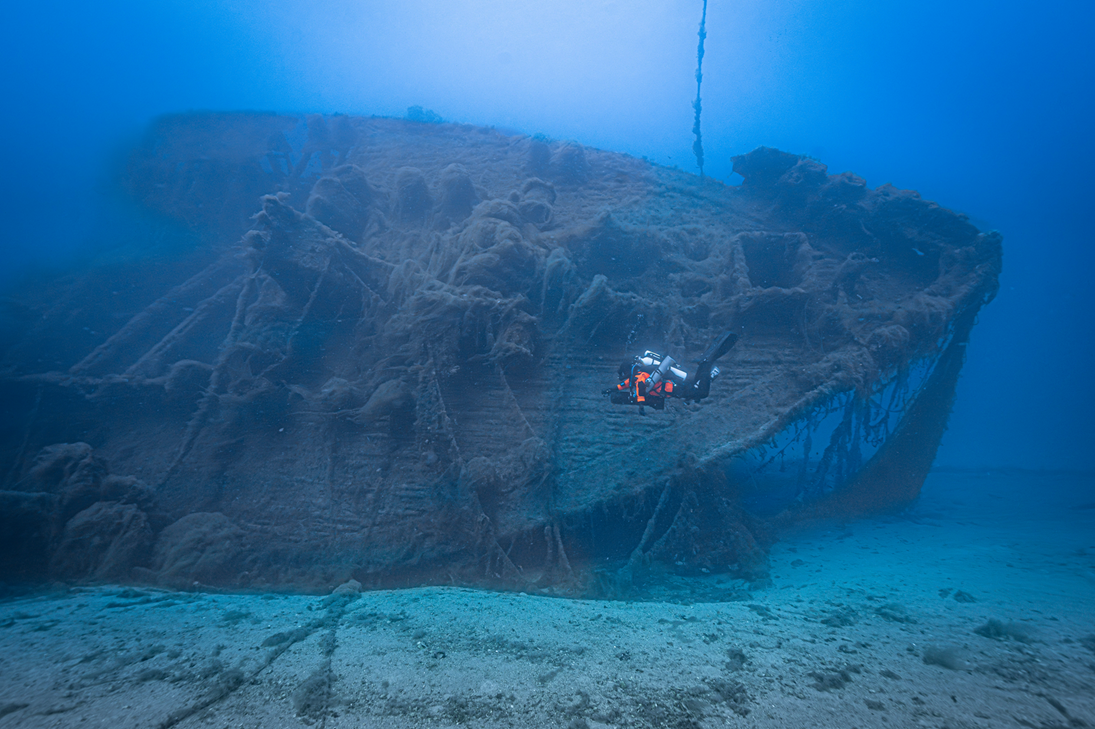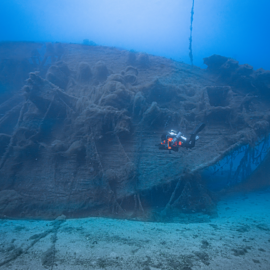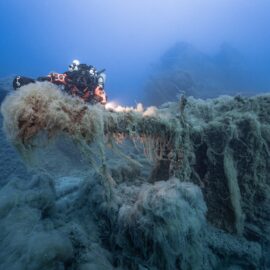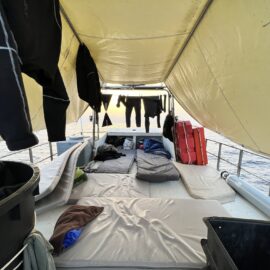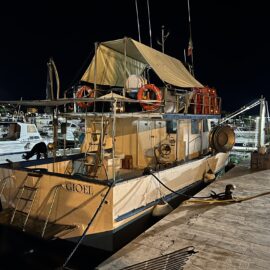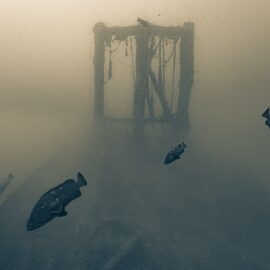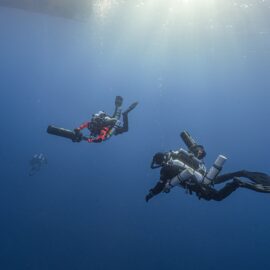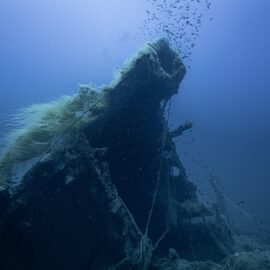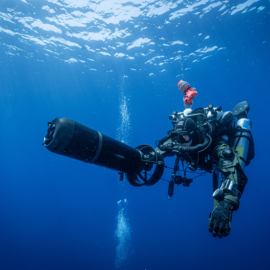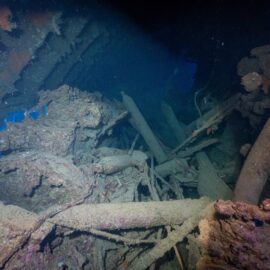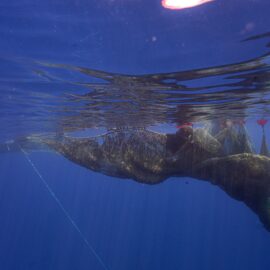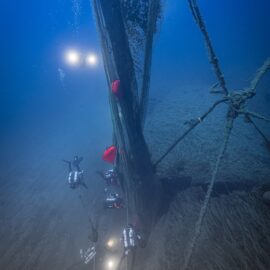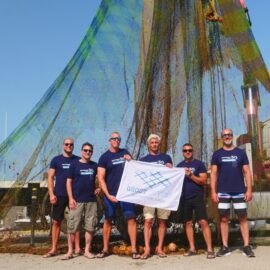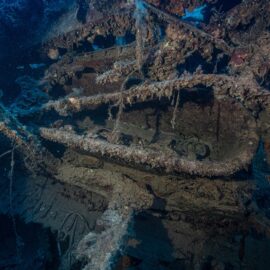Republished from Perfect Diver Magazine. Article by Isadora Abuter.
Combining History with Conservation? Healthy Seas, Ghost Diving and the Society for Documentation of Submerged Sites (SDSS) bridged historical restoration with marine conservation in June 2023, when technical and experienced divers set onboard for an 8-day expedition to remote locations, far away from shore in the open sea. The target: ships sunk during WWII in the Mediterranean Sea between Italy’s Lampedusa Island and Tunisia.
During World War II, the Central Mediterranean Sea served as a significant battleground where the naval and air forces of Italy-German and the British Commonwealth engaged in an intense conflict. This three-year-long struggle was primarily focused on safeguarding their respective sea routes and disrupting those of their rivals.
Specifically, the Italian Navy faced the challenging responsibility of supplying the Italian-German Armies engaged in North African desert warfare. The British forces aimed to impede enemy maritime traffic, dismantle Axis supply lines at sea, and provide support to the strategic island base of Malta.
Ghost Diving, led by Ben Oortwijn and Pascal van Erp, alongside a team of dedicated volunteer divers, played a key role in this project. Their mission was to remove ghost nets entangled in the wrecks, blocking entrances and endangering marine life on several WWII ships lying at various depths, ranging from 42 up to 62 meters. A perfect cooperation: Ghost Divers clearing the structures from ghost nets, enabling Mario Areana and his SDSS team to document the historic wrecks from the Mediterranean Convoy Battle.
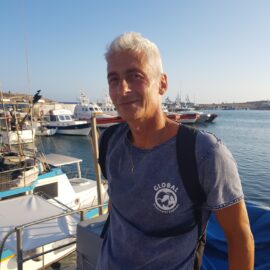
Credit: Derk Remmers (Diver: Mario Arena)
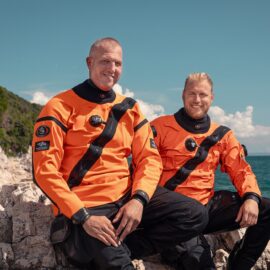
Credit: Carlino Photo (Divers: Ben Oortwijn & Pascal van Erp)
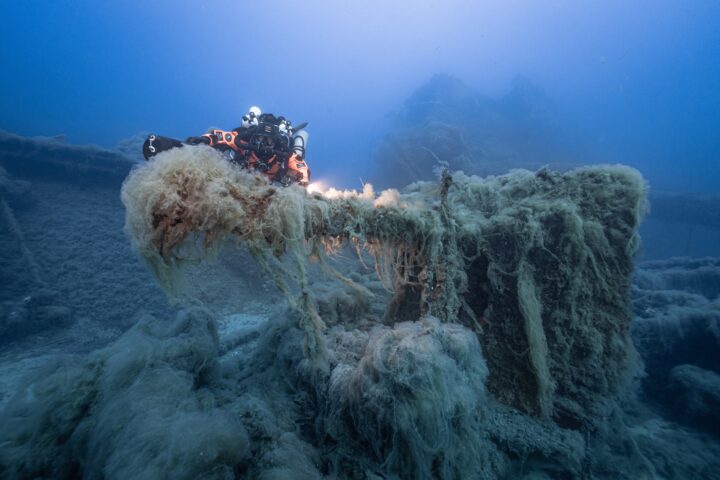
Credit: Derk Remmers
The expedition posed considerable challenges, from logistics to the intricacies of diving in remote locations and was carried out on a fishing vessel. The choice of a fishing vessel was not arbitrary but was born out of necessity. The wrecks’ coordinates remain exclusive to this group, either discovered through years of exploration or shared by local fishermen.
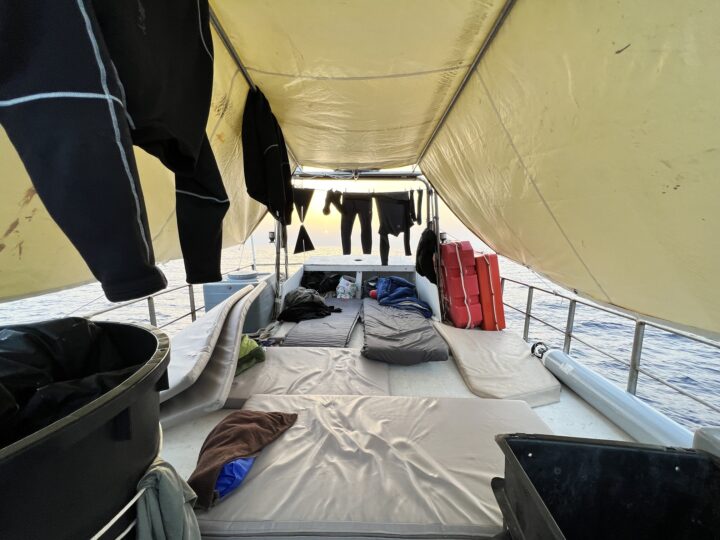
Credit: Derk Remmers (Sleeping place on the boat)
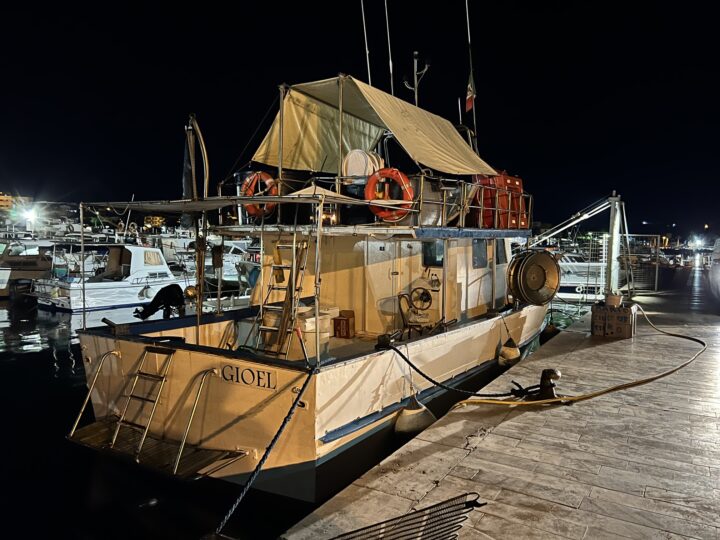
Credit: Derk Remmers (fishing vessel)
Marine Symphony
The Mediterranean Sea hosts a complex relationship between its physical aspects and marine life, particularly in the Sicily Channel and Tunisia Plateau. This ecosystem, rich in marine biology and ecology, is greatly impacted by oceanic currents, topographical features, and hydrodynamic processes.
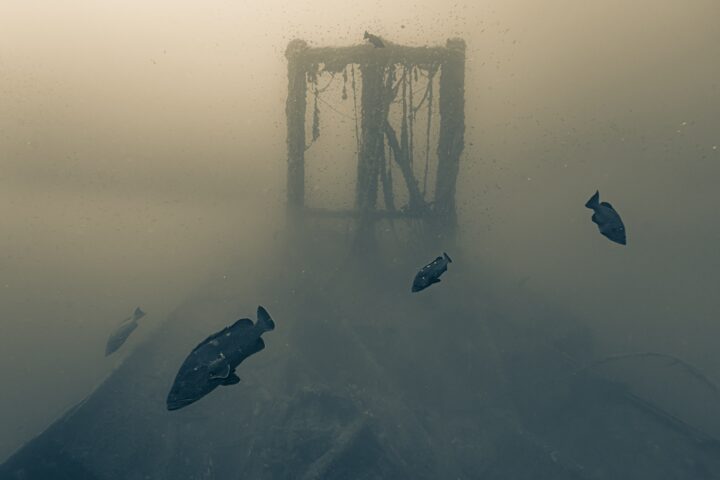
Credit: Derk Remmers
These waters are a hotspot for biodiversity hosting iconic species like the vulnerable Mediterranean fin whales and common bottlenose dolphins. The underwater terrain of the Sicily Channel and Tunisia Plateau is formed by topography and currents, creating features like troughs (gently sloping depression in the ocean floor) and seamounts (an underwater mountain or hill that rises significantly above the surrounding ocean floor but does not reach the surface of the water). These dynamics lead to nutrient-rich zones, supporting diverse coral communities, including deep-sea coral mounds. Not only the natural environment in this area, but also the sunken ships create unique marine ecosystems, acting as reefs and sanctuaries. However, these wrecks often entangle with fishing nets. Initiatives like Ghost Diving and Healthy Seas focus on removing harmful ghost gear, preventing its occurrence, and educating the public.
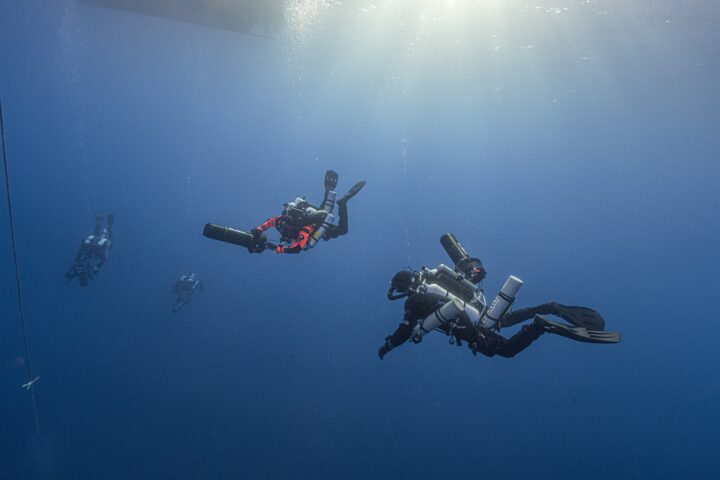
Credit: Derk Remmers
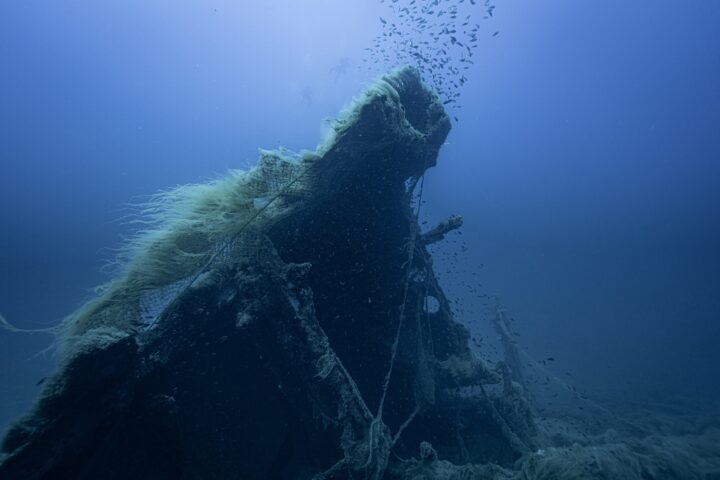
Credit: Derk Remmers
Ghost Diving, SDSS and Healthy Seas carried out the expedition on some significant shipwrecks, each with its own narrative of the past. Among them was an unknown shipwreck, still containing numerous aerial bombs and vehicles within its hull. The volunteers managed to retrieve several nets, one of them colossal and believed to have its origin in Egypt, unveiling a refurbished habitat for marine organisms while making it at the same time more accessible for documentation and exploration. Reflecting on this collaborative venture, Mario Arena, the founder of SDSS, stated, “Since 2007 when our team began exploring the wrecks at this location, we are continuously running into fishing nets. The collaboration with Healthy Seas and Ghost Diving is allowing us to make progress in our historical discoveries.”
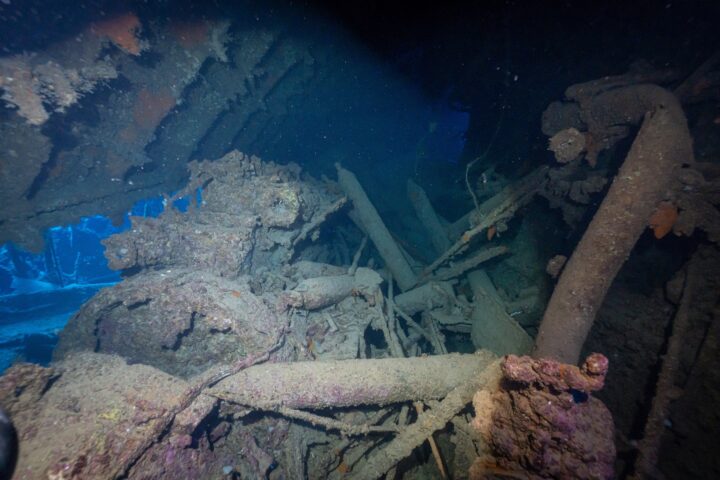
Credit: Derk Remmers
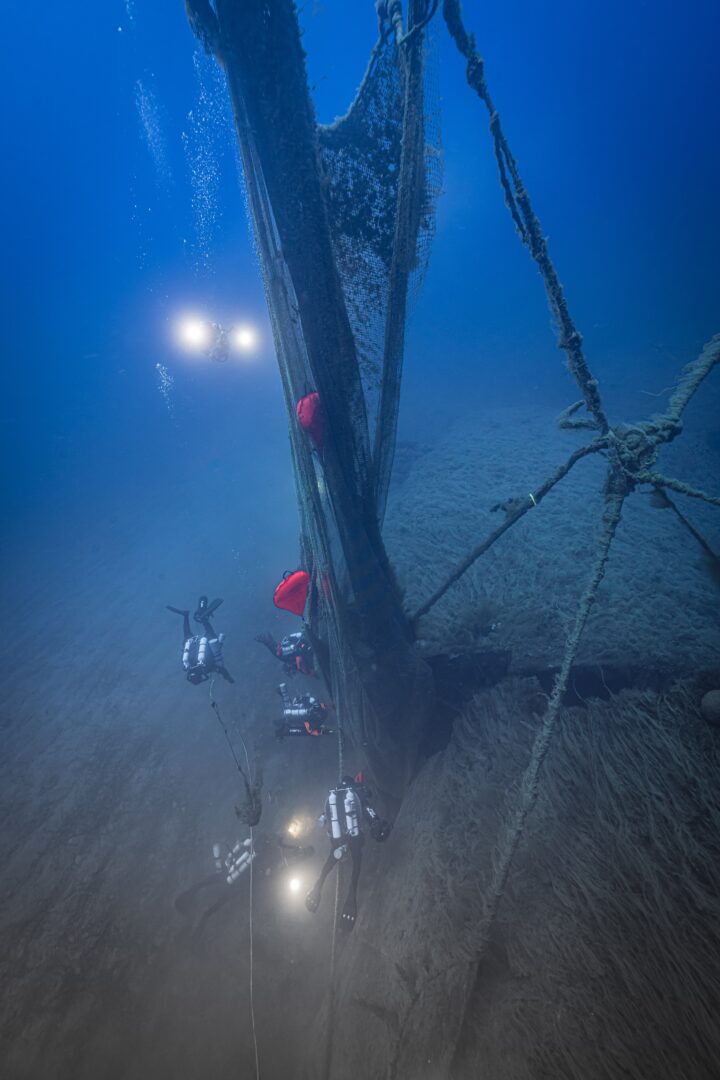
Credit: Derk Remmers
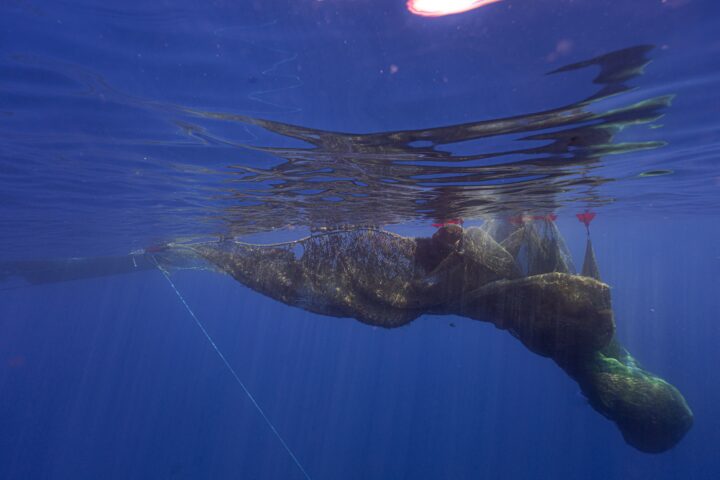
Credit: Derk Remmers
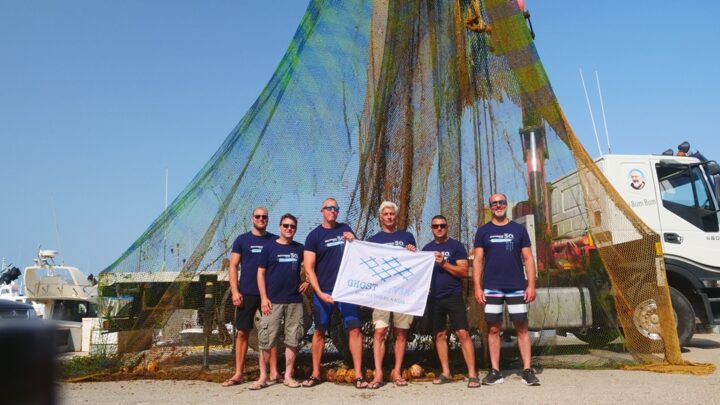
Credit: Derk Remmers
The divers encountered ghost nets on all shipwrecks. Although they recovered a significant amount of them, there are still nets to be retrieved, and Healthy Seas, together with Ghost Diving and SDSS is already working on the next mission between Lampedusa Island and Tunisia.
What happened to the nets that were retrieved?
One of the main pillars of the work at Healthy Seas is to introduce “end-of-life” nets into the circular economy. That is why, whenever possible, nets are given new life. To align with the responsible management of resources, the massive Egypt net retrieved during the mission will be transformed into new fishing nets, which will be given to fishermen on Lampedusa. Other nets retrieved by Ghost Diving and Healthy Seas are regenerated together with other nylon waste into ECONYL® yarn. This yarn finds applications in the fashion and interior sectors.
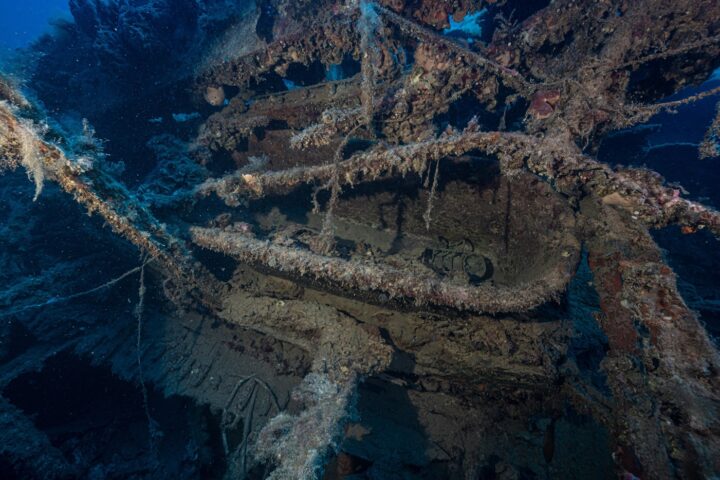
Credit: Artemis
Project Lampedusa 2023 was supported by Hyundai Motor Europe



